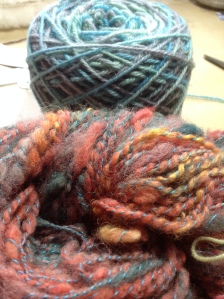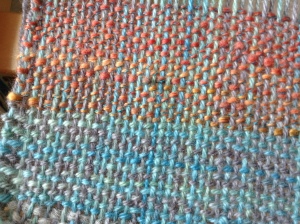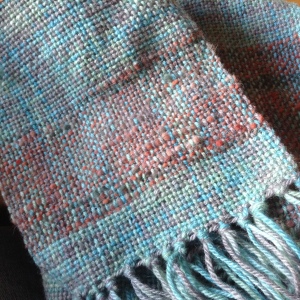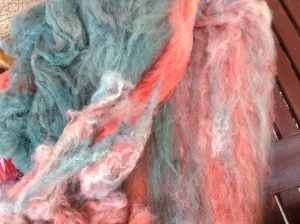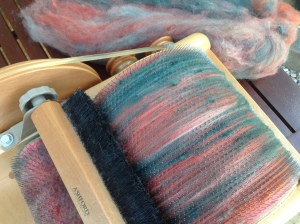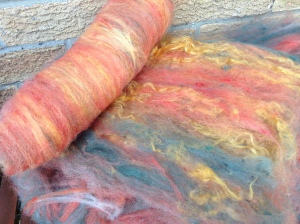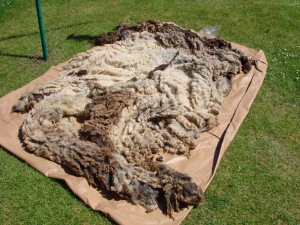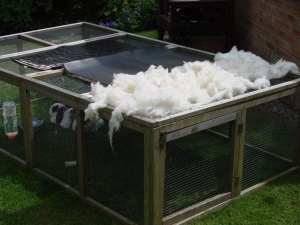This week I was passing through a village near my home and in the window of a house clearance shop I suddenly spotted a spinning wheel. An emergency stop ensued and I rushed to the shop window to have a closer look. To my frustration the shop was closed, allowing me time to tell myself I really did not need another wheel and I should go home quietly and find something useful to do. However, the sight of this poor forlorn, unloved wheel burned a hole in my heart and the next day I phoned to arrange to meet the owner when the shop was open.
Entering the shop full of treasures from the past I could sense this wheel needed a home. Apparently it came from the home of a lady in her nineties who had passed away and family members had cleared out the rest of the house leaving the wheel in a cupboard beneath the stairs to be salvaged by the final stages of clearance. The footman was dangling, the bobbin was full of decaying yarn and the lazy kate had no metal spokes to carry a bobbin ( a very lazy kate!). Having only ever used a modern Ashford Joy wheel I was totally unfamiliar with the workings of this traditional style wheel and had no idea if I would be able to restore it to its former glory but I decided I was feeling brave and bought it. Apparently another customer had viewed it with a plan to use it decoratively in a fireplace – a distressing thought that something so beautiful with such working potential could be cast to a life of inactivity and unused dustiness!
Carrying it through the village attracted a few comments but it squeezed nicely into the back of my car once the seats were put down and travelled to its new home.
At home I sat down to investigate this beautiful piece of woodwork. My first port of call was my dear friend of Once a Sheep , the person who was entirely to blame for drawing me over to the woolly side about 6 years ago. She would know what to do next!
The advice was lots of oil and wax. I ordered up some more bobbins and managed to fix the leather connector to the footman with a spare screw. Lots and lots of oiling of working parts has ensued and I’m layering on wax to nourish the dried out wood and obscure the water marks where it had got wet at some point. As I worked on her ( now a she rather than an it!) I was wondering about the lady who had once owned her. The scrap of yarn on the bobbin appeared to have been dyed with natural dye, possibly onion skin. Had she been a serious spinner or someone who dipped into a new hobby and gave up? Looking at the chips and knocks on the maidens and the flyer I think this wheel had been well used and loved.
Ready to run, I threaded her up and started to spin. What a joy to see it working! There is something magical about the traditional design which has been lost in the more compact modern versions. She spins like a dream and hopefully with more oil she will stop creaking completely. I can’t wait to create beautiful yarns from her and wonder if someone is looking down on me, glad that her wheel has found a happy new home.
Now all that remains is to find a place for her to live……






